With a vibrant pigmentation that turns heads to their dining versatility, here are the Best Purple Vegetables to Grow in the Garden.
These Purple Vegetables are high in anthocyanin, flavonoids, and resveratrol and are rich in plant compounds. Grow them today for a healthier heart and stronger bones.
Here are the Best Purple Succulents you can grow
Best Purple Vegetables
1. Cherokee Purple Tomato

Botanical Name: Solanum lycopersicum
Cherokee purple is a great vegetable to grow that stands out with a sweet and smoky flavor. These can be eaten as salads and provide Vitamins C, K, and A.
Growing Tips: Here is how you can grow tomatoes in pots.
2. Royal Snow Peas

Botanical Name: Pisum sativum
Royal snow peas exhibit a dark purple color and can even be enjoyed raw with a slightly bitter but pleasant taste. These are rich in Vitamin C and improve immunity.
Note: Looking for a nice Snow Peas Recipe? Check it out here!
Growing Tips: Check out Everything about growing peas in pots here.
3. Purple Carrots
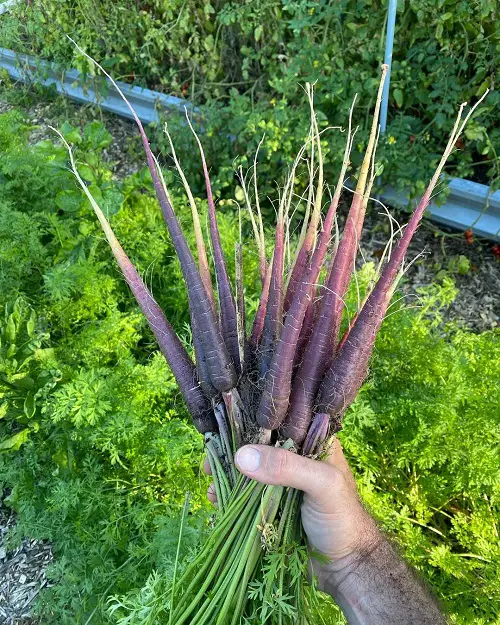
Botanical Name: Daucus carota
These eye-catching purple carrots are high in nutrition, alpha, and beta carotene and rich in anthocyanins. You can eat them raw or add them to salads, cook, roast, and pickle.
Growing Tips: Learn more about growing carrots from carrot tops here
4. Redbor Kale

Botanical Name: Brassica oleracea var. acephala f. tricolor
Redbor Kale is a lovely purple vegetable you can grow in the garden. With a mild cabbage-like taste, the Redbor Kale can be eaten raw or cooked and is an excellent source of iron, calcium, potassium, carbs, and fibers.
Growing Tips: Here are the best types of Kale.
5. Red Cabbage
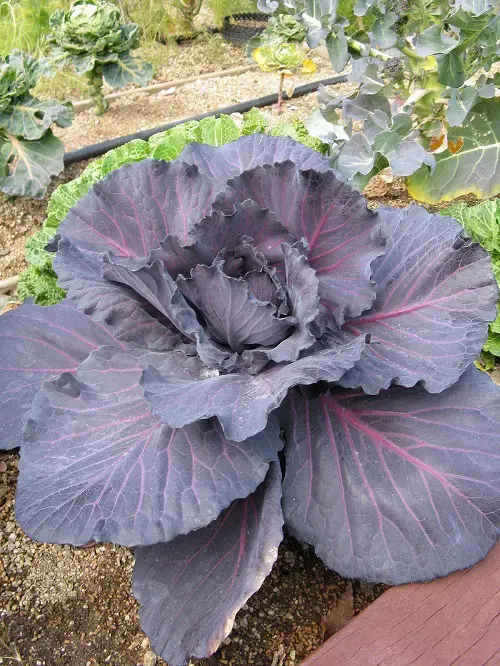
Botanical Name: Brassica oleracea var. capitata f. rubra
Red Cabbages are a great addition to any garden that can be enjoyed raw, in salads, or as the German Blaukraut. Rich in Vitamin K, zinc, and magnesium and exhibiting a deep purple color, red cabbages improve any garden by providing ornamental beauty and benefits.
Growing Tips: Check out cabbage growing tips no one would tell you here.
6. Purple Beans
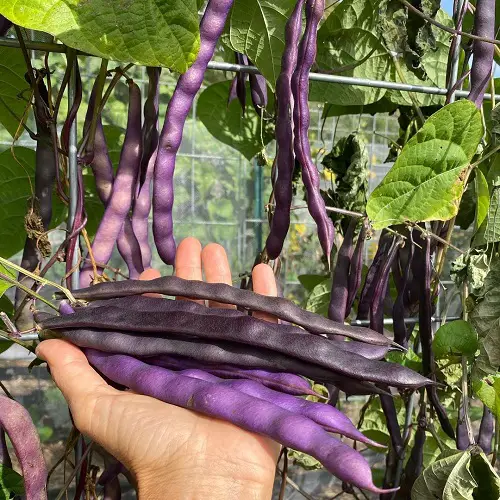
Botanical Name: Macroptilium atropurpureum
Packing a fresh crunch and sweet finish, purple beans add passionate purple to the garden and provide dietary fiber and vitamins A, C, thiamine, and pyridoxine.
Growing Tips: Learn about growing different types of bean varieties here.
7. Eggplant
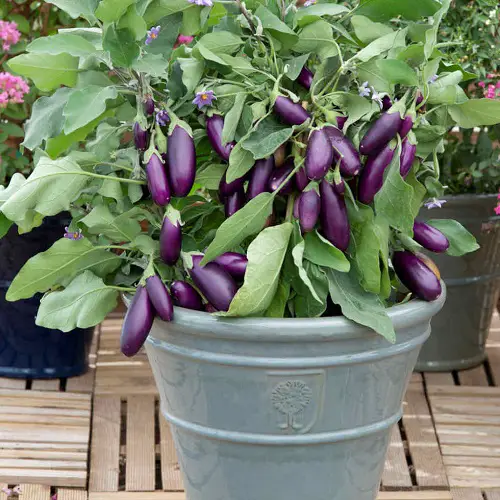
Botanical Name: Solanum melongena
Eggplant flourishes as purple flowers and gorgeous fruit, enhancing any garden. These are used in countless delicious recipes and can be steamed, braised, roasted, and grilled.
Growing Tips: Wanna try? Check out how to grow eggplant in a pot here
8. Radicchio 
Botanical Name: Cichorium intybus var. foliosum
Also known as Red Chicory, radicchio brings a vibrance to the table and the garden with its purple and white color. These can be consumed raw, cooked, or grilled and do surprisingly well in pasta, soup, and salads, adding a mild bitterness.
Growing Tips: Here are fast-growing leafy vegetables you can harvest in just 15 days.
9. Beets
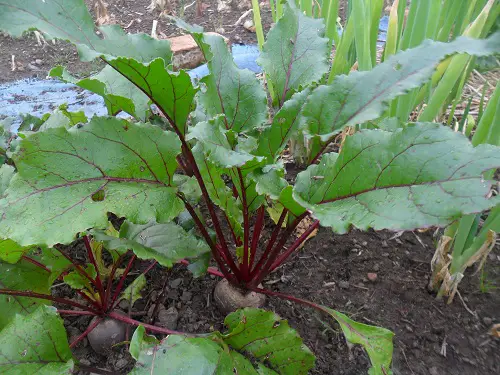
Botanical Name: Beta vulgaris
Beets are an excellent purple vegetable with an excellent aroma that is a great addition to the garden. These are rich in folate and nitrates and keep the heart strong.
Growing Tips: Learn growing beets in containers here.
10. Purple Passion Spinach
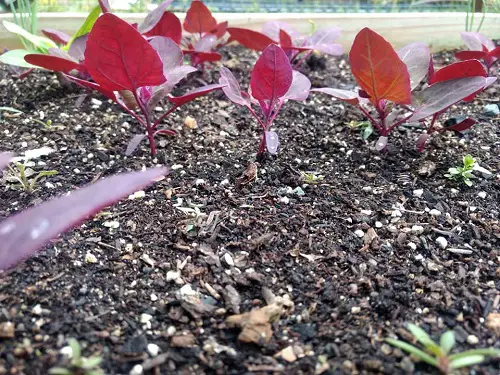
Botanical Name: Atriplex hortensis
Purple passion spinach adds bright purple foliage to the garden and comes packed with beta-carotene and lutein. These can be eaten raw or cooked and consumed as juice.
Growing Tips: Here is a quick guide to growing spinach in pots.
11. Purple Ruffles Basil
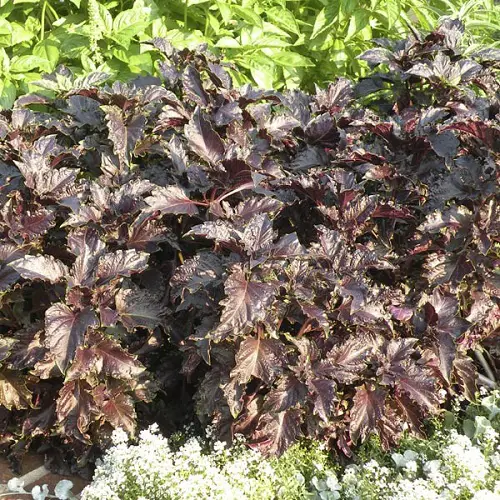
Botanical Name: Lamiaceae
Purple Ruffles Basil is a beautiful addition to any garden. These bring an ornamental appeal to the plate and are known for their mild flavor that combines sweet and spicy.
Growing Tips: Here are the best basil varieties you can grow.
12. Redwing Onions
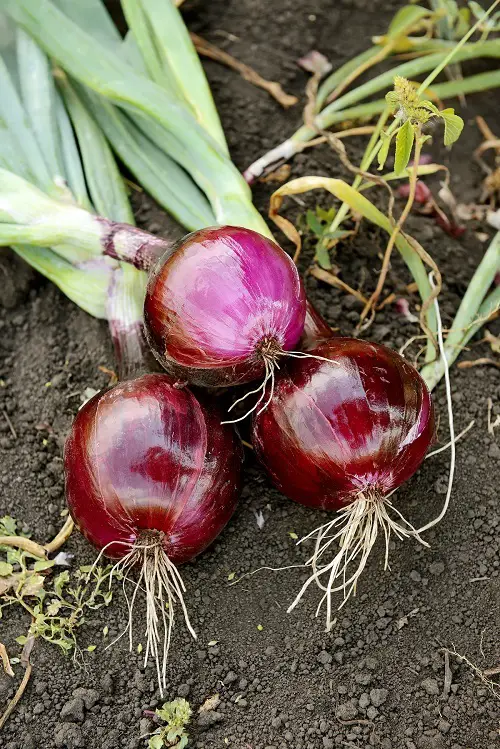
Botanical Name: Allium cepa
With a wine-hued globe, Redwing Onions are easy to grow and prepare. These are known for their sweet, mild taste and can be eaten in salads or cooked in soups, stews, and sandwiches. Redwing Onions reduce cholesterol and high blood pressure.
Growing Tips: Check out onion skin uses you wish you knew before here.
13. KN-Bravo Daikon Radish
Botanical Name: Raphanus sativus
KN-Bravo Daikon Radishes have an eye-catching purple color, crispy texture, and a peppery-sweet flavor that can be enjoyed raw, cooked, baked, boiled, and steamed.
Growing Tips: Here are the best radish varieties you can grow.
14. Dragon Tongue Beans
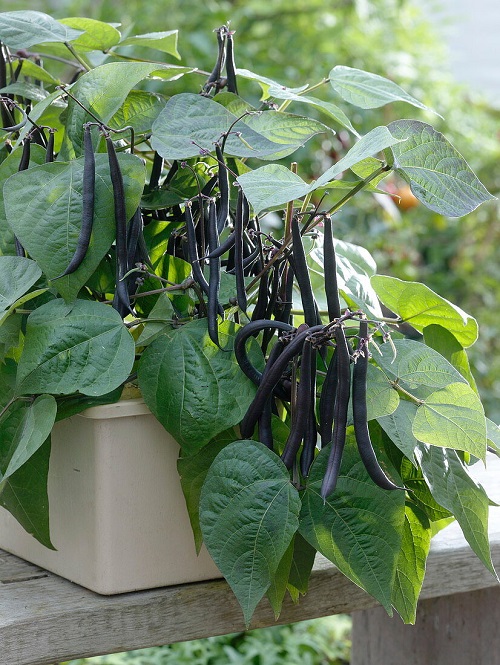
Botanical Name: Phaseolus vulgaris
Dragon Tongue Beans are a delicacy that can be enjoyed freshly cooked in many ways. These long beans also have an attractive purple color that is often mixed with green or yellow and catches everyone’s attention with its particular shape.
Growing Tips: Like beans? Learn how to grow cluster beans here.
15. Magic Molly Potatoes
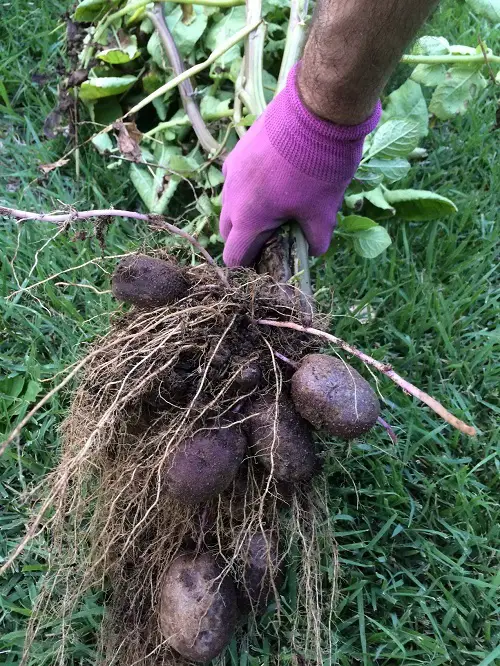
Botanical Name: Solanum tuberosum
Magic Molly Potatoes are dark purple potatoes with a creamy texture and earthy flavor. A fabulous vegetable to grow in the garden, unlike other vegetables, these purple potatoes retain their color even when cooked and are an excellent source of anthocyanins.
Growing Tips: Here are 18 different ways to grow potatoes.
16. Purple Kohlrabi
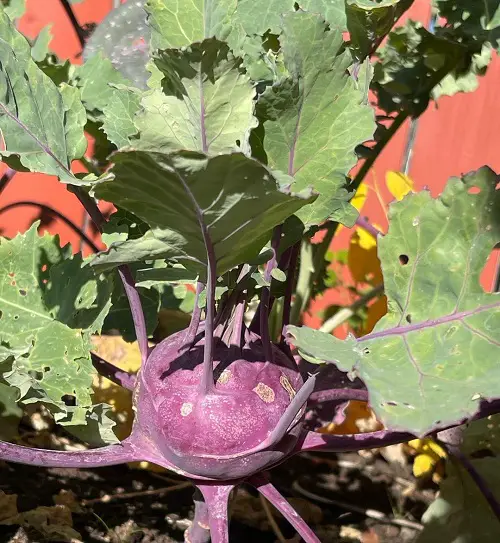
Botanical Name: Brassica oleracea
Member of the cabbage family, purple kohlrabi has a similar subtle smell and a crispy, meaty flavor. Throwing sharp contrast to the dark purple covering, the flesh is ivory white and goes well in stir-fried, steamed, and salad recipes.
Want to Grow Kohlrabi in Pots? Click here
17. Purple Bell Peppers

Botanical Name: Capsicum annuum
The color change of this crispy vegetable is a treat to watch that begins with green, turning to white, and developing purple stripes that ultimately take over the veggie. It adds a crispy, grassy flavor to vegan dishes.
Find the Best Ornamental Pepper Varieties here
18. Purple Amaranth

Botanical Name: Amaranthus blitum
Purple Amaranth shares a close resemblance to Spinach and serves similar culinary purposes. However, the heart-shaped leaves have a greenish tinge with burgundy to purplish-toothed edges.
19. Purple Yam
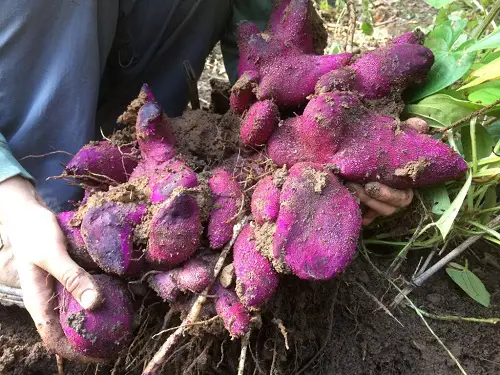
Botanical Name: Dioscorea alata
Unlike other purple vegetables, Purple Yam has a purplish flesh that adds a nutty, potato-like flavor to savory dishes. Their skin is greyish brown with a hint of purple.
20. Sweet Potatoes

Botanical Name: Ipomoea batatas
Sweet Potatoes have pink-purple skin with white flesh. Goes just like potatoes but with a sweeter taste and meaty flavor; you can cook them in fries and curries or bake and roast them.



